/ News
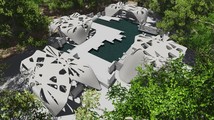
Renderings & Details Unveiled for Extraordinary 3D Printed Home in New York
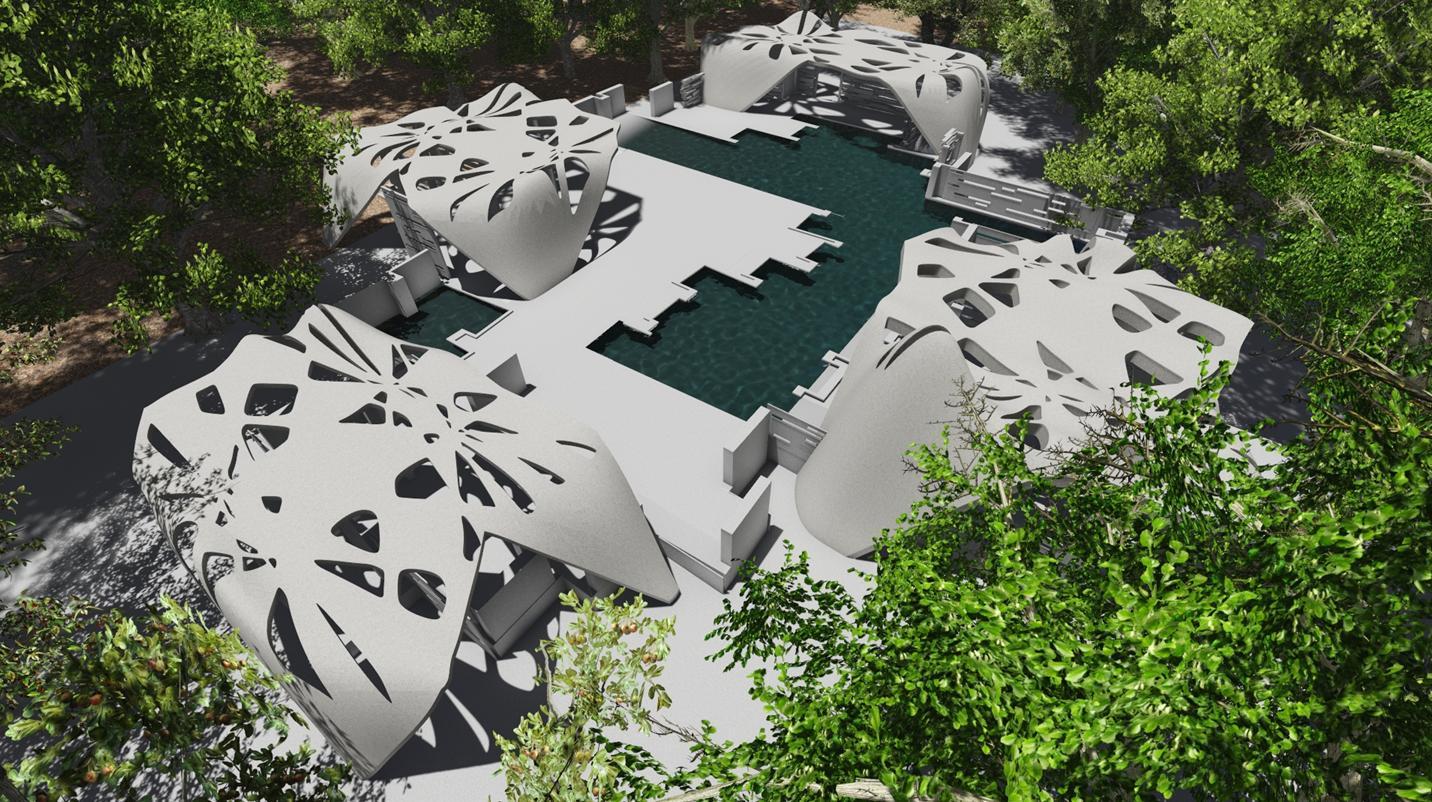
Back in August of 2014, 3DPrint.com broke a story on a project originating from New York City architect/contractor Adam Kushner, and the company which he is the president of, D-Shape Enterprises. That project was one of massive scale, something never seen before within the 3D printing space. Kushner had come up with a plan to 3D print an entire estate in upstate New York, consisting of a 3D printed 2400-square-foot house and a large 3D printed swimming pool, as well as a pool house and car port which will also be 3D printed. At the time, all that Kushner had to present were architectural drawings
This past week at MecklerMedia‘s 3D Print Week NY event, both Kushner and the CEO of D-Shape, James Wolff, were on hand to discuss further details of Kushner’s mammoth project. The project will be undertaken in a location about 85 miles from New York City, on a 5-acre parcel of land that Kushner and his wife purchased back in the spring of 2012.
“We bought the raw land about a year before any such notions of 3D printing were in the works or had even entered my mind,” Kushner explained. “So the initial designs that followed had little to do with that method of construction.”
Kushner and his wife absolutely fell in love with the land, which provides for a perfect setting for a 3D printed estate. The plan for the estate is designed to reflect the geomorphology of the rocks found on the site itself. Kushner and D-Shape plan on 3D printing the estate using these rocks for aggregates which are found on the site.
“The materials on the site will be used to form the pieces of the site, which reflects the very characteristics of the site, which stems from the materials found on the site,” explained Kushner. “I think it’s a perfect circle.”
This method of construction is referred to as in situ resource utilization, and if D-Shape is successful, this could quite feasibly become a viable construction method of the future. Unlike other large-scale 3D printers, which companies like WinSun and individuals such as Professor Behrokh Khoshnevis and architect Andrey Rudenko have used in the printing of large-scale structures, D-Shape’s printers are different. While the aforementioned individuals and companies utilize printers which more or less print using a deposition-based model similar to what we see with FFF-based desktop 3D printers — except replacing the heated thermoplastic extrusion process with pressure-based concrete extrusion — D-Shape uses a different type of printer.
The printers that D-Shape uses are invented by D-Shape founder Enrico Dini, and they print using on-site resources, combined with a magnesium-based binding agent. If WinSun and Rudenko’s methods of printing were comparable to desktop FFF-based 3D printers, these machines could be comparable to inkjet-based 3D printers. This means that many more architectural designs are possible, without the need for manually assembling and moving the printed pieces around. D-Shape will be able to completely 3D print these structures using the same in situ resources (sands) which create the structures, to also act as support for the construction of the structures themselves.
The 3D printer that will be used in printing the estate
“It is important to not only bring out the potential in terms of process but also product,” Kushner explained. “We can achieve effects of light, transparency, and structural gymnastics essential to [a] design, which can not be done with any other current construction method.”
The project, which is expected to kick off construction soon, will rely on traditional cast and place footings which will be put in place as Kushner awaits the delivery of the large-scale 3D printer from Italy. The manual placement of these footers is being done this way because it is quicker than having to wait for approval and the arrival of the printer itself. Kushner stated that they have actually 3D printed directly on soil in the past, so it would definitely be feasible to print the footers if so desired.
Sample prints that Kushner and Wolff had on hand at the event
“There are issues of compliance,” Kushner explained. “Being acceptable to the local building department, as there is no empirical data that exists yet to ascertain the stresses and strains for cast-in-place rebar.”
The 3D printer is slated to arrive in NY sometime in May (2015), as it is currently awaiting approval by NATO, which Kushner joked essentially states that he isn’t bringing a weapon of mass destruction into the country. By the 1st of June, they hope to have begun the first trials and test prints using this new machine.
Kushner is building this estate for his family to live in, yet at the same time, it will be a way in which he can work out the kinks of the machine, making it production-ready for further use. They will start by 3D printing the pool, and then follow that with the pool house and car port, before ending on the most challenging piece of the project, the 2400-square-foot house itself.
“If we can build a pool, then we can begin building reefs, and repair bridges, bulkheads and other underwater structures which there is a huge worldwide need [for],” explained Kushner. “The thought is that if we can build a pool house and modest enclosed structure, then it is a short step to building emergency shelters and low cost housing units.”
Kushner realizes that, on the surface, his project may seem ridiculous to some. He may merely appear as a wealthy individual looking to build a unique second home. While this is true to a certain degree, he emphasized that this project is actually more humanitarian than it seems. He is spending a long time contemplating methodologies that will lead to a means of producing affordable housing — something the world is in dire need of. He views this as a major paradigm shift in the way we build structures, and he feels that this method of construction is extremely significant, perhaps on par with how the elevator changed the skylines around the world, and how the automobile has shaped our modern day cities.
Rendering – From inside the pool house
The 3D printing method used by D-Shape will allow for a means of construction that wastes virtually no materials and causes no negative environmental impact. It is as “green” of a method of construction as we can conceive of today.
Kushner believes that 3D printing the pool on his estate will be the easiest aspect of this large project, with the printing of the pool house being next. However, the construction of the car port and ultimately the house will be the most challenging and complex, as he will have to figure out a method of 3D printing steel-reinforced concrete.
“We view this as the next significant breakthrough that has [eluded] everyone in this small sub-field of 3D printing,” says Kushner. “To fully emulate the composite beam construction, would open up the construction industry in ways even we have not fully explored yet. It has been suggested that we use fiberglass strands in the mix, [as well as] basalt,
Once they are successful in 3D printing the car port, the next large step will be printing the house itself — a cantilever structure that will be “floating over the pool and site.” If all goes as planned Kushner hopes to have broken ground on this part of the project by the spring of 2016. When it comes down to it, no one has yet figured out a way to 3D print a structure that includes rebar within. Thus if successful, Kushner and D-Shape will open the door to what could become the next great revolution within the construction industry. Imagine the money saved, if entire homes could be printed from the ground up.
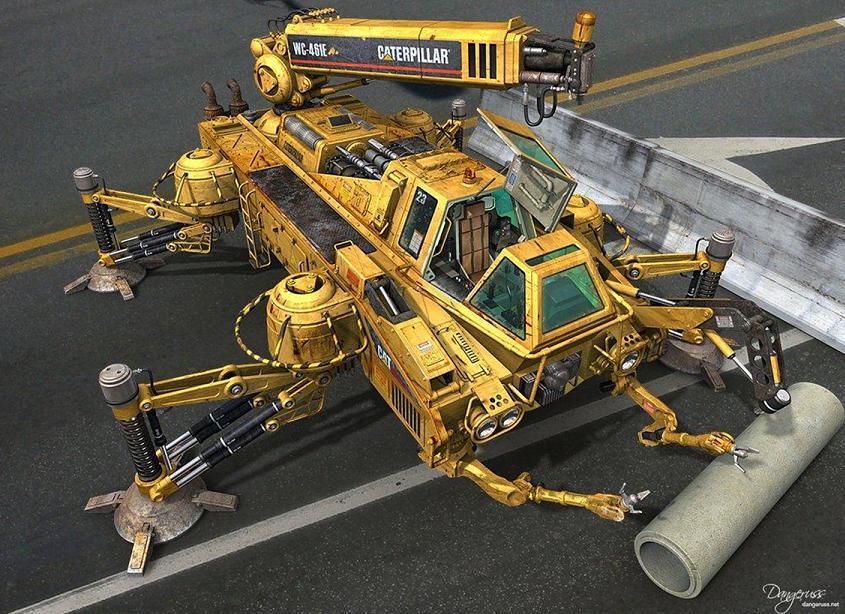
The goal for D-Shape is to create a machine that has a dual printing head for both steel rebar and concrete, although this has not yet been determined as the method which they will use in the construction of Kushner’s home. Kushner said that they have also spoken with John Deere and Caterpillar about potentially incorporating some of their equipment into D-Shape’s future machines, which will allow the 3D printers to become mobile, opening even more doors within the construction industry.
Many readers are probably asking, “Why use 3D printing for the construction of buildings?” Kushner answered this question by outlining the following:
- Safter work environment
- Less required labor
- Customization without the typical costs for customization
- Precise construction
- Less material waste
- Use of local materials
- Cheaper than traditional construction
- Faster than traditional construction
- Less environmental impact
As mentioned above, the only materials used for the printing of these structures are on-site sands, salt water, and magnesium. The power requirement to run the machine is minimal. It runs on the equivalent of a 220V, 40 Amp circuit, which is basically the same power consumption as needed to run a Lincoln arc welder.
Kushner believes that once proven, D-Shape’s technology will turn the architectural and construction worlds upside down, allowing virtually anyone with a license to 3D print their own homes, simply by leasing a machine. If true, this could do wonders in third world countries where supplies are greatly limited, and money is sparse. If you can take on-site resources, feed them through a 3D printer, and end up with homes to live in, this technology could quite easily be one of the greatest breakthroughs of the 21st century.
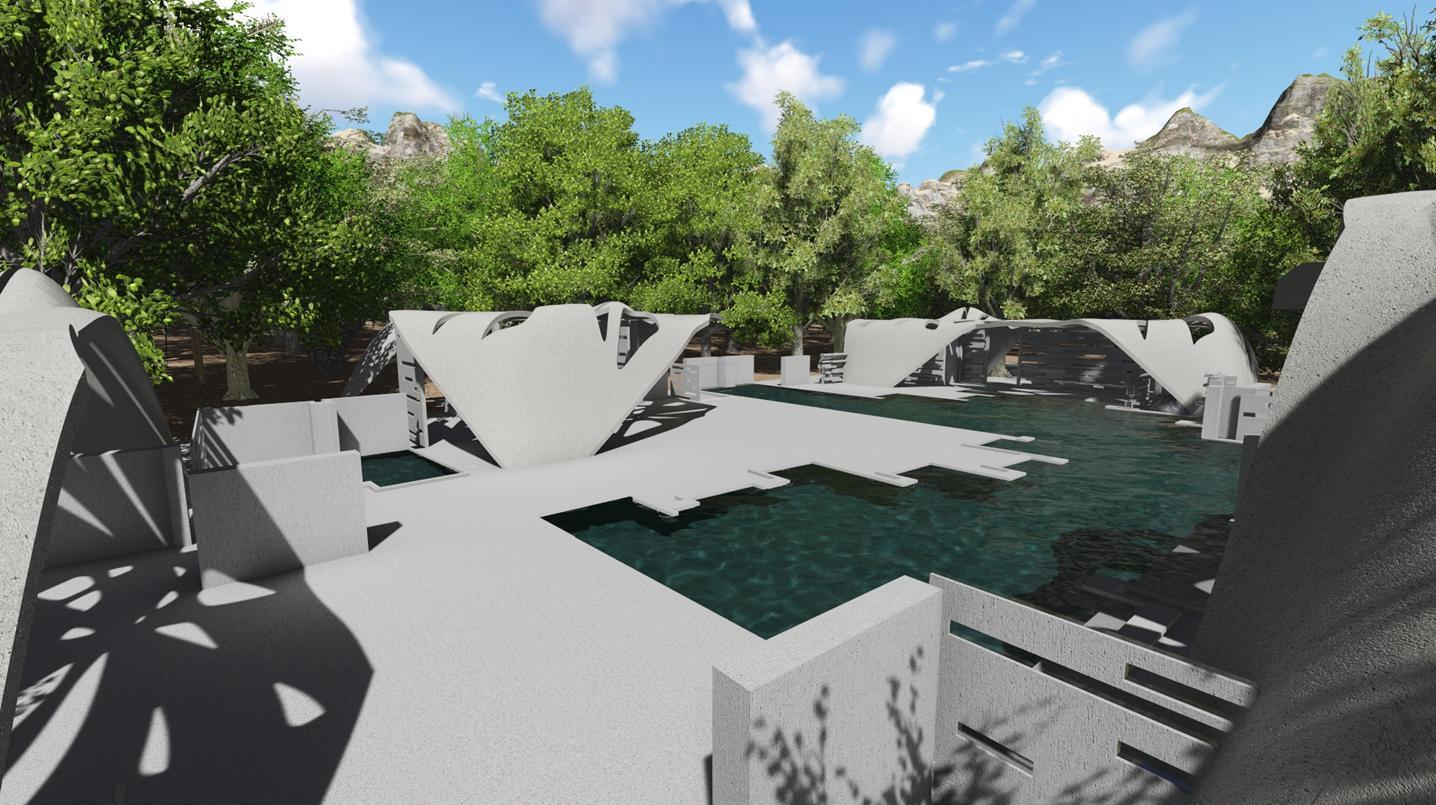
Rendering – From entrance across site towards north
It all starts this spring in New York, as Kushner and D-Shape attempt to make history. I’m not just talking about the kind of history that is recorded in the Guinness Book of World Records or is archived in the New York Times. I’m talking about the type of history that ends up in history books all around the world, which people study for millennia. D-Shape isn’t willing to just stop there either. Their next plan is to conquer the moon, hopefully through a partnership with the European Space Agency to 3D print moon bases.
What do you think? Is this the future of the construction industry? Will D-Shape and Kushner succeed? Discuss in the 3D Printed Estate in New York forum thread on 3DPB.com.
Source: http://3dprint.com/59753/d-shape-3d-printed-house-ny/
/ About us
Founded by Russian entrepreneur Dmitry Itskov in February 2011 with the participation of leading Russian specialists in the field of neural interfaces, robotics, artificial organs and systems.
The main goals of the 2045 Initiative: the creation and realization of a new strategy for the development of humanity which meets global civilization challenges; the creation of optimale conditions promoting the spiritual enlightenment of humanity; and the realization of a new futuristic reality based on 5 principles: high spirituality, high culture, high ethics, high science and high technologies.
The main science mega-project of the 2045 Initiative aims to create technologies enabling the transfer of a individual’s personality to a more advanced non-biological carrier, and extending life, including to the point of immortality. We devote particular attention to enabling the fullest possible dialogue between the world’s major spiritual traditions, science and society.
A large-scale transformation of humanity, comparable to some of the major spiritual and sci-tech revolutions in history, will require a new strategy. We believe this to be necessary to overcome existing crises, which threaten our planetary habitat and the continued existence of humanity as a species. With the 2045 Initiative, we hope to realize a new strategy for humanity's development, and in so doing, create a more productive, fulfilling, and satisfying future.
The "2045" team is working towards creating an international research center where leading scientists will be engaged in research and development in the fields of anthropomorphic robotics, living systems modeling and brain and consciousness modeling with the goal of transferring one’s individual consciousness to an artificial carrier and achieving cybernetic immortality.
An annual congress "The Global Future 2045" is organized by the Initiative to give platform for discussing mankind's evolutionary strategy based on technologies of cybernetic immortality as well as the possible impact of such technologies on global society, politics and economies of the future.
Future prospects of "2045" Initiative for society
2015-2020
The emergence and widespread use of affordable android "avatars" controlled by a "brain-computer" interface. Coupled with related technologies “avatars’ will give people a number of new features: ability to work in dangerous environments, perform rescue operations, travel in extreme situations etc.
Avatar components will be used in medicine for the rehabilitation of fully or partially disabled patients giving them prosthetic limbs or recover lost senses.
2020-2025
Creation of an autonomous life-support system for the human brain linked to a robot, ‘avatar’, will save people whose body is completely worn out or irreversibly damaged. Any patient with an intact brain will be able to return to a fully functioning bodily life. Such technologies will greatly enlarge the possibility of hybrid bio-electronic devices, thus creating a new IT revolution and will make all kinds of superimpositions of electronic and biological systems possible.
2030-2035
Creation of a computer model of the brain and human consciousness with the subsequent development of means to transfer individual consciousness onto an artificial carrier. This development will profoundly change the world, it will not only give everyone the possibility of cybernetic immortality but will also create a friendly artificial intelligence, expand human capabilities and provide opportunities for ordinary people to restore or modify their own brain multiple times. The final result at this stage can be a real revolution in the understanding of human nature that will completely change the human and technical prospects for humanity.
2045
This is the time when substance-independent minds will receive new bodies with capacities far exceeding those of ordinary humans. A new era for humanity will arrive! Changes will occur in all spheres of human activity – energy generation, transportation, politics, medicine, psychology, sciences, and so on.
Today it is hard to imagine a future when bodies consisting of nanorobots will become affordable and capable of taking any form. It is also hard to imagine body holograms featuring controlled matter. One thing is clear however: humanity, for the first time in its history, will make a fully managed evolutionary transition and eventually become a new species. Moreover, prerequisites for a large-scale expansion into outer space will be created as well.
Key elements of the project in the future
• International social movement
• social network immortal.me
• charitable foundation "Global Future 2045" (Foundation 2045)
• scientific research centre "Immortality"
• business incubator
• University of "Immortality"
• annual award for contribution to the realization of the project of "Immortality”.


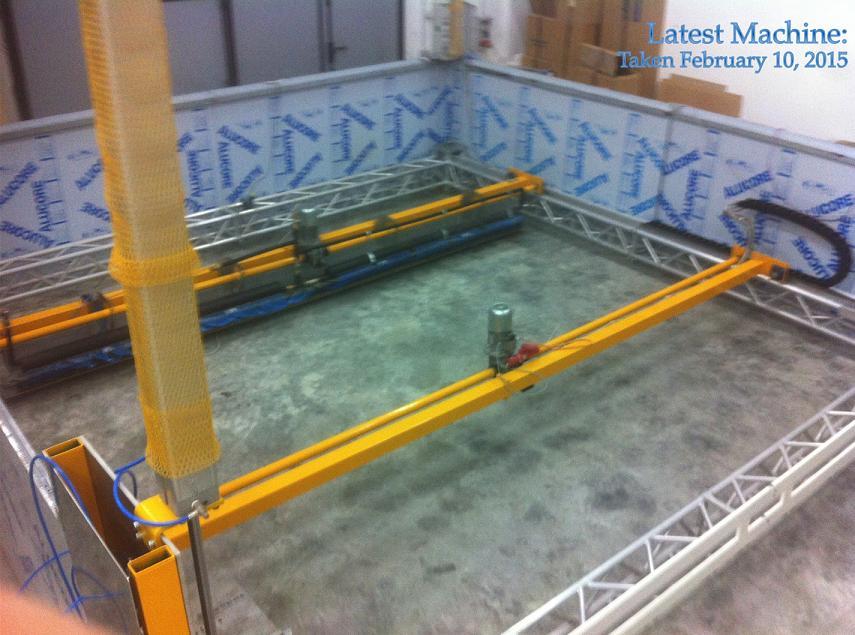
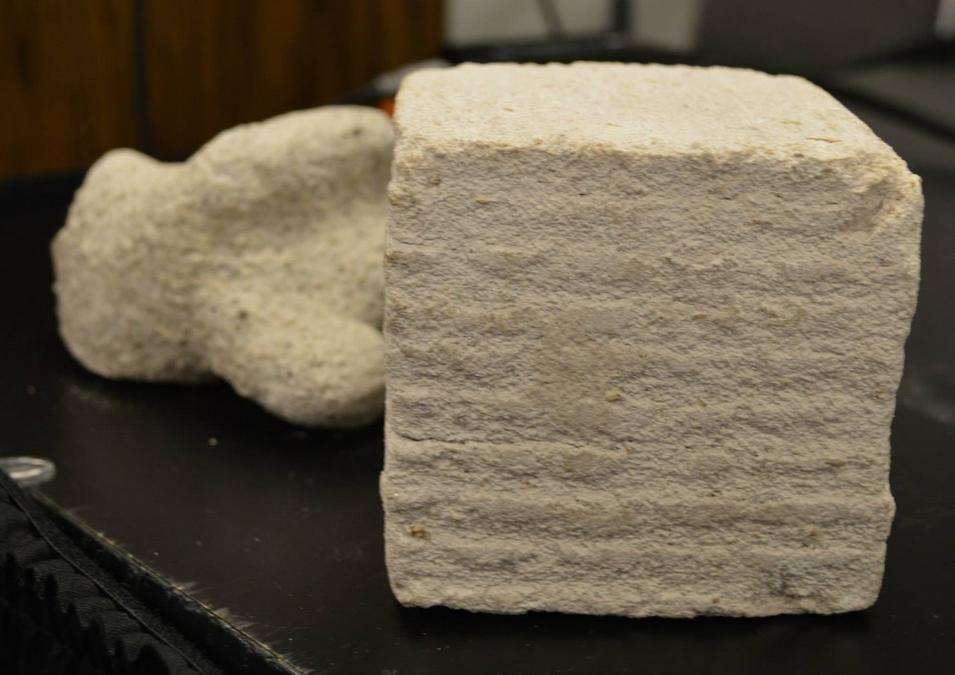
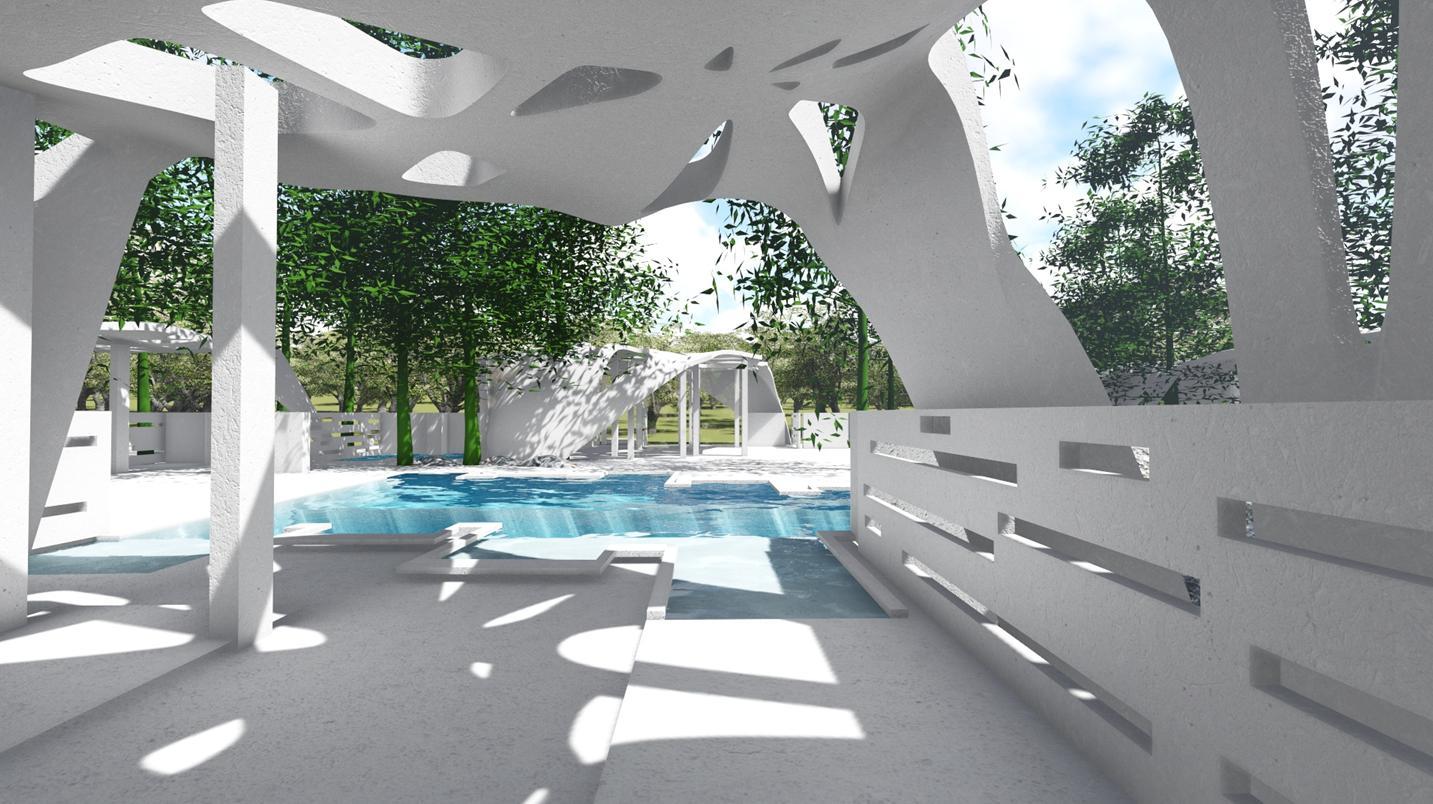

 LinkedIn
LinkedIn
 LiveJournal
LiveJournal
 Google
Google
 Twitter
Twitter
 Facebook
Facebook
 Я.ру
Я.ру
 ВКонтакте
ВКонтакте
 Mail.ru
Mail.ru